Chapel of the Benedictine Monastery: Light emerging from the origin of an idea
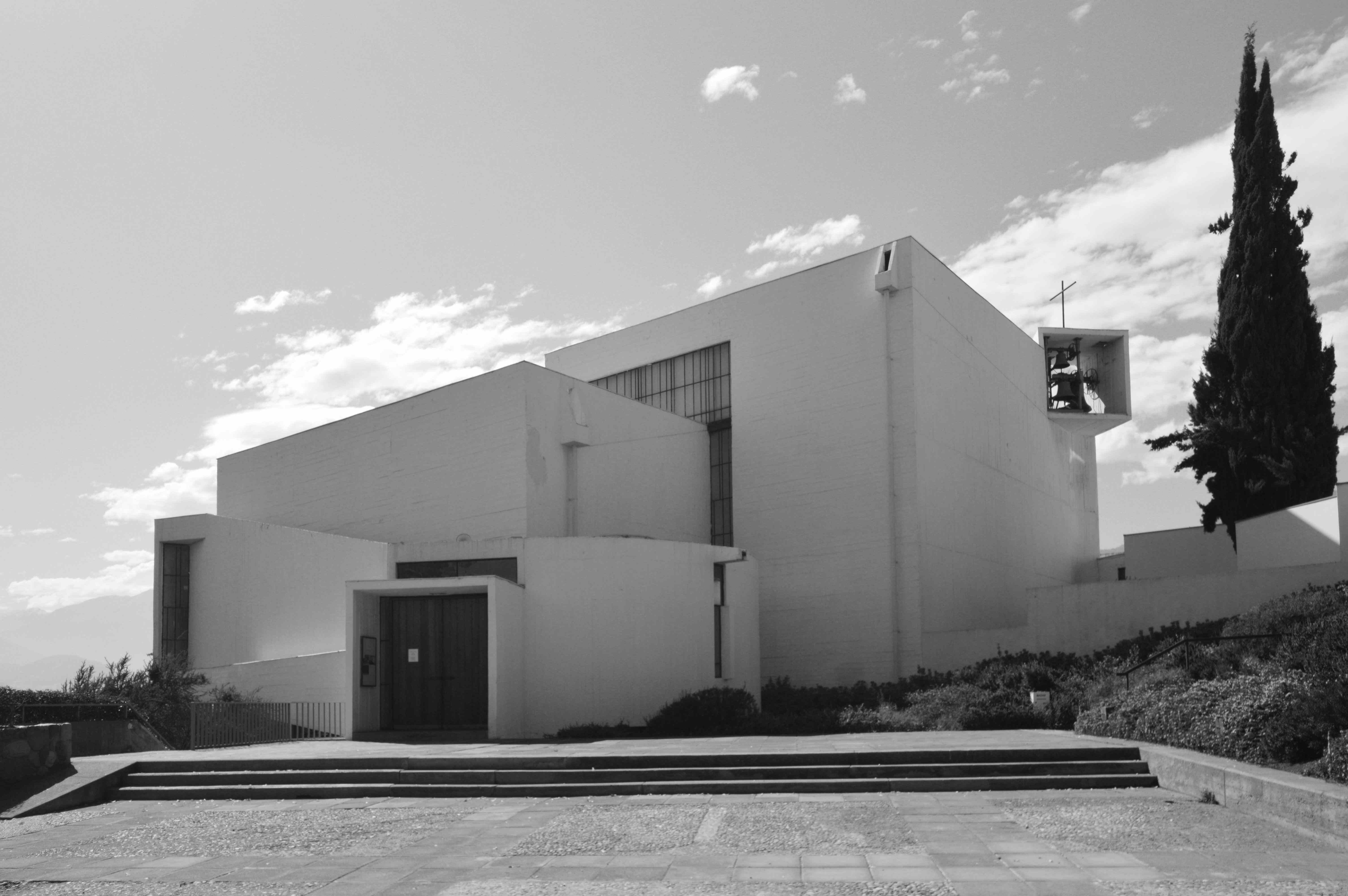
Chile is a country greatly influenced by its proximity to the mountains, giving a unique perspective to the apparent motion of the sun and the impact of the changing light it provides.
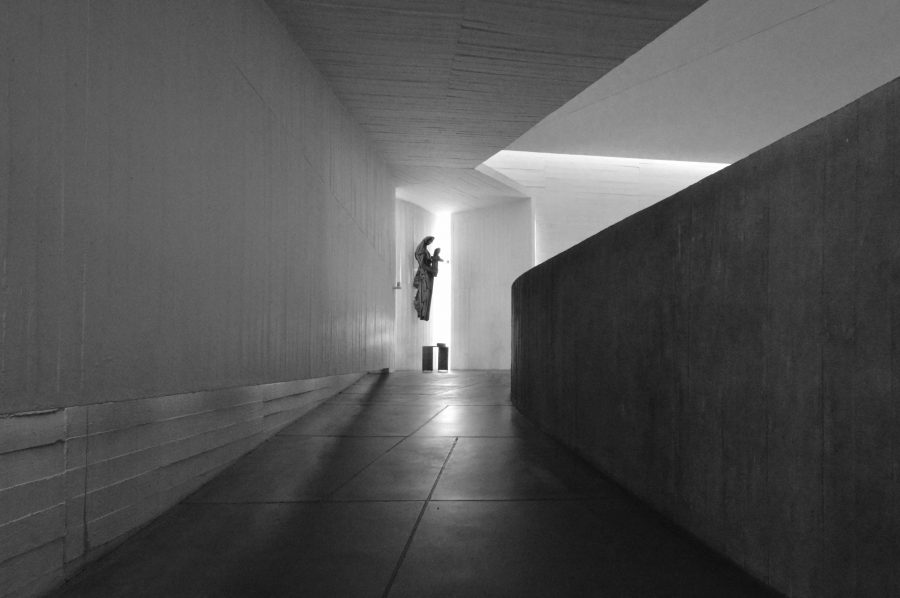 Access ramp to the Monastery. Copyright: Diego Baloian.
Access ramp to the Monastery. Copyright: Diego Baloian.
A few miles from downtown Santiago, on the slope of a hill named Los Piques and facing the Andean Mountains, lies a project that illustrates the awakening of Chilean Modern Architecture.
In 1962, a Benedictine Congregation asked two young architects, Gabriel Guarda and Martín Correa, to design a new monastery in an area at the edge of the city, with panoramic views of the mountains and Santiago Valley. This coincided with the forging of an independent pathway by Chilean architects.
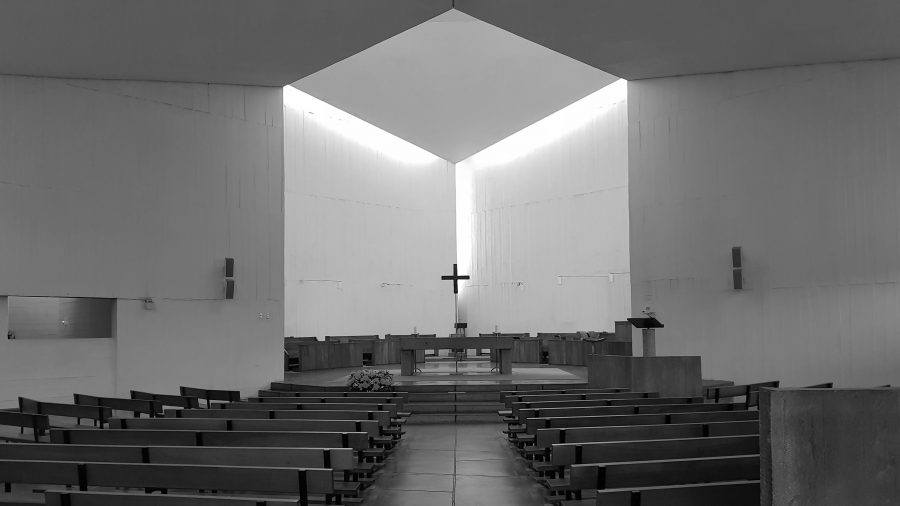
Central axis of the Monastery Chapel. Copyright: Diego Baloian.
Benedictine Monastery’s space perspective
At the entrance of the site a long path terminates in an esplanade facing the Church, creating a secluded location. Despite this building having no view to the outside, it is closely linked to its surroundings, by the use of natural light as a medium that literally becomes a building material.
The principal body of the building consists of two large interconnecting cubes that create a diagonal axis leading to the altar, with one cube housing the parishioners and the other the presbytery. Light entering the cubes at the edges meets the various internal faces in a constantly changing way. In the early morning when the sun rises from behind the Andes Mountains to the east, the presbytery is filled with light. As the day progresses and the sun arcs across the sky, the reflection of the sunlight against the white interior concrete walls alters, with a resulting changing perception of space and texture.
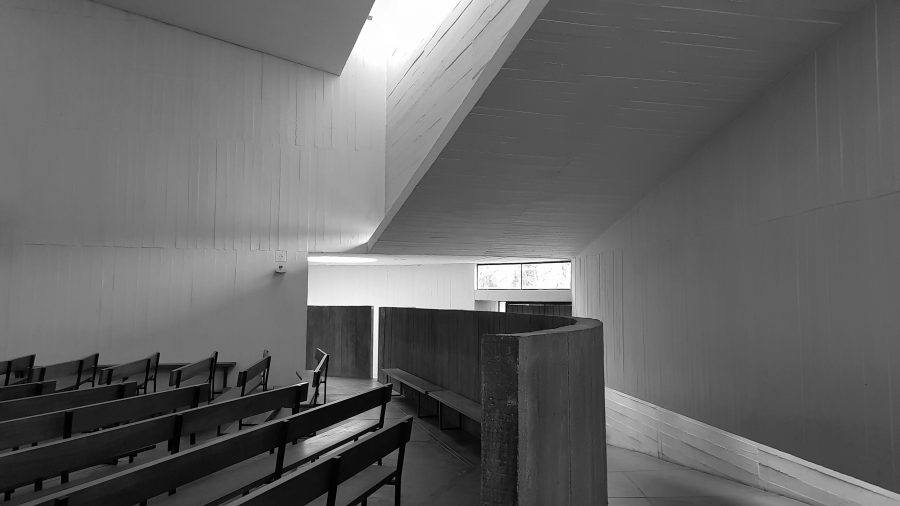 Edges of the entrance to the Monastery. Copyright: Diego Baloian.
Edges of the entrance to the Monastery. Copyright: Diego Baloian.
A Lifetime relationship within the Benedictine Monastery
After their work was completed, in 1963, both architects remained in the congregation and live as monks in the monastery to this day. Despite their age it is possible to find them praying and to have the opportunity to hear them talk about their experience creating the project. “We were young and actually did not have any clue about how to commence such an enterprise, but our true inspiration arose one day in a very thick forest, after finding an overhead gleam of light coming down amongst the trees. At that precise moment we understood what we had to build “.
Their creation marked a milestone in the development of architecture in Chile and is still regarded as significant in modern day architectural thinking. This is an amazing feat given that this was their first and last work.
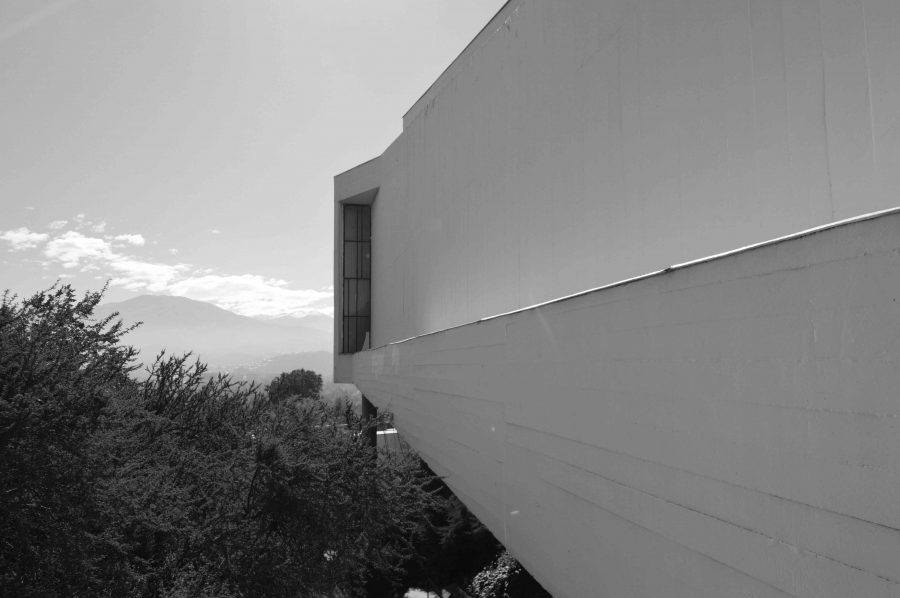
Mountain view of the Monastery. Copyright: Diego Baloian.
Text by: Diego Baloian – Guiding Architects’ member in Santiago de Chile






What we can once again see in this example: the stories behind the buildings are just as interesting as the architecture itself. Wonderful!
Not only the story of a definite architect ‘s career, but also the most poetic building in South America. Light and space, architecture in its comprehensive essence. That’s all what architecture needs. Incredibly beautiful, it goes straight into your soul and deep into your heart.